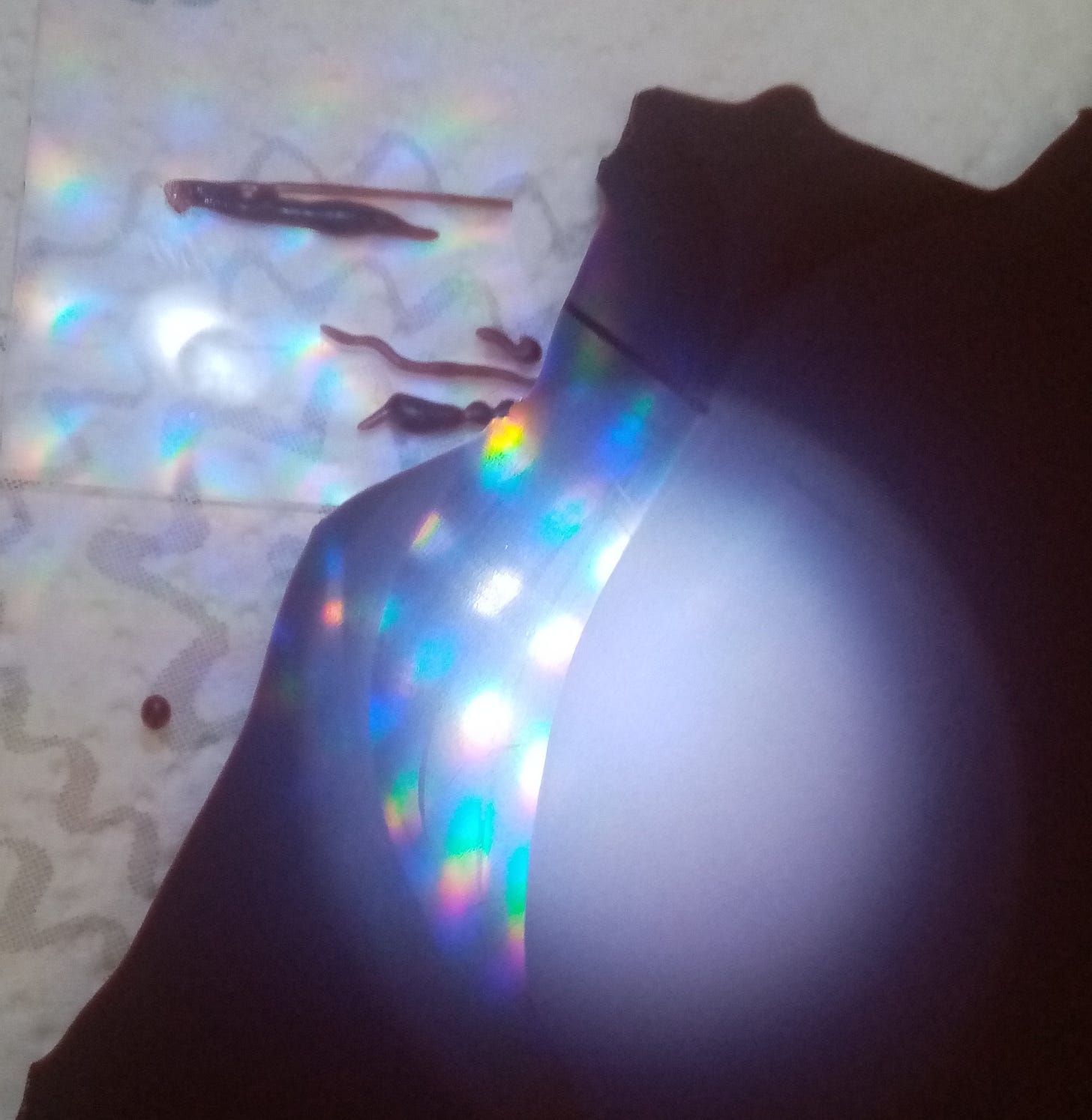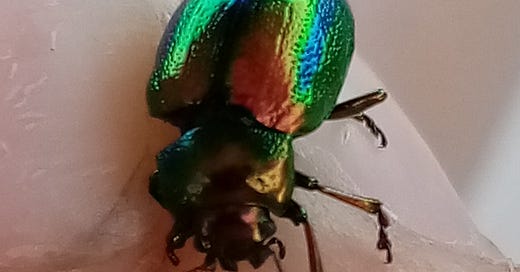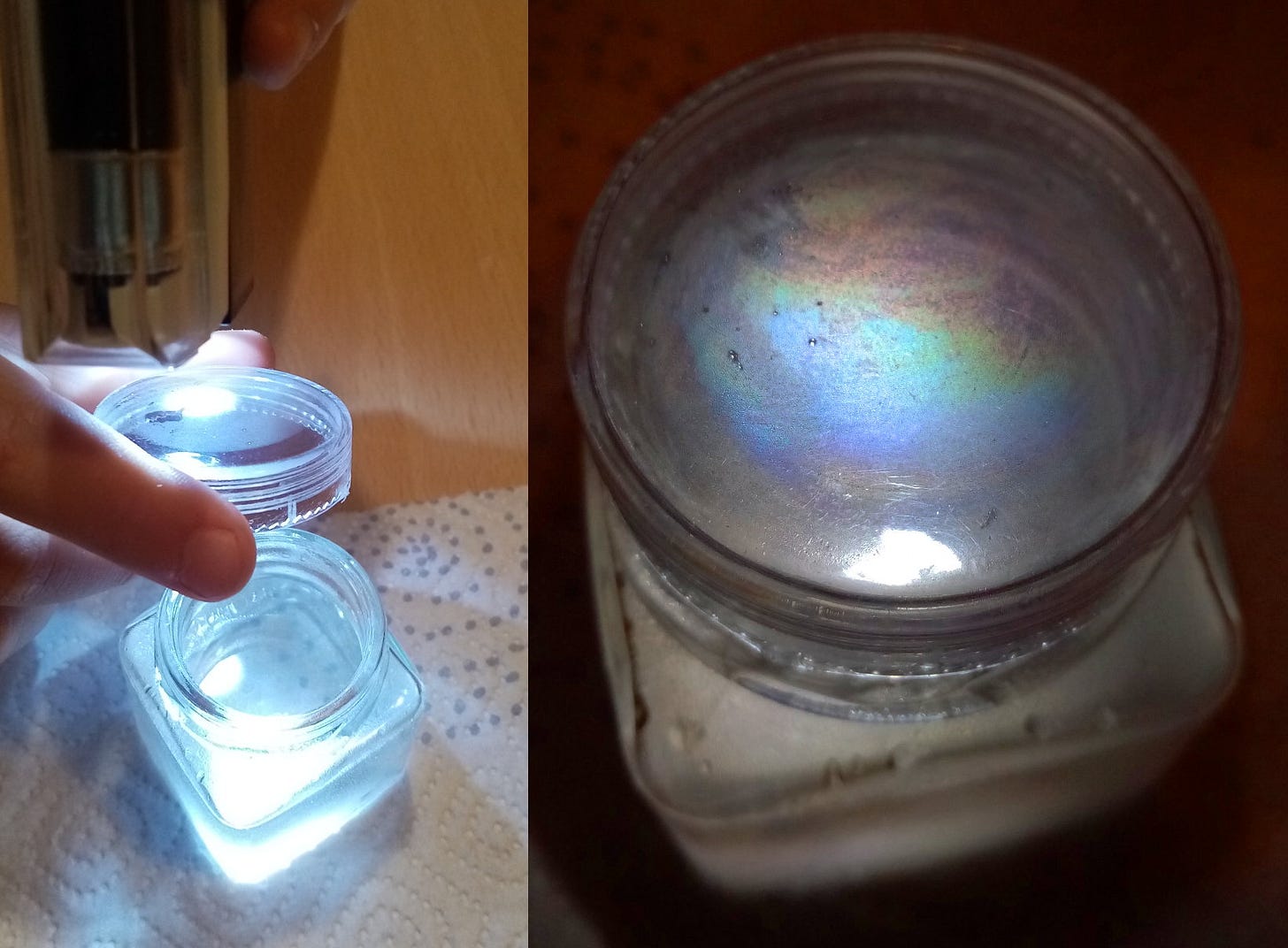I see rainbows everywhere. Am I normal?
I can see it in clouds, soap bubbles, insects, birds, oil spills, and in many other surprising places. Why is that?
I had seen it many times – rainbow colors on a mist condensed on the inner side of a plastic bottle left in the sun. Nothing exciting, I thought. The water evaporated and condensed into tiny droplets that bend light into different directions like an ordinary rainbow. A group of scientists at MIT and Penn State University had the same reaction in 2018 when they watched similar droplets in their Petri dish. Except that they decided to calculate the colors they should see. They immediately realized that this basic assumption is wrong – it is not like an ordinary rainbow. Why? Because these are not spheres, but hemispheres attached to the surface of a container.
I am always amazed when something new and practical is discovered from seemingly mundane situations. This realization that having hemispheres brings something new to our understanding of colors resulted in an exciting research project with practical applications and high-profile research publications (see video). It is like our episode on drying droplets, another seemingly mundane topic that turned out to be very complicated, exciting, and useful.
You can easily make that rainbow experiment at home:
Prepare a small cup, a transparent cover, and a flashlight.
Rub the inner side of the cover with a tiny bit of cooking oil. Oil repels water, which will make droplets rounder. This helps in making colors more intense.
Put a warm water into the cup and cover it. The vapor will condense on the cover into small droplets that start to show colors when illuminated by the flashlight.
The colors are formed by the light interference effect based on the wave nature of light. In our previous episode we describe the light interference and what role it played in the scientists’ struggle to explain the formation of rainbows (and how typical explanations in textbooks are simplifications rooted in the 19th century concepts). It is impossible to understand details of rainbows and many other atmospheric light phenomena without the theory of light interference.
In the above experiment, the interference appears because hemispheres allow for parallel light rays to travel different path lengths within the drop, and then exit into the same direction (see the video for a better understanding). These differences in the path lengths shift the light waves relative to each other. Since different colors are waves of different wavelengths, some colors benefit from this shift and get boosted, while others get canceled (see the wave summation animation in our previous episode).

The resulting colors in the experiment depend on the angle of view and the angle of illumination. This type of color behavior is called iridescence. Also, the colors are formed thanks to the special 3-dimensional structure (lots of tiny hemispherical drops) that colorless water creates on the plastic cover. This type of iridescent colors is called structural colors.
A famous example of structural iridescent color is a soap bubble. If you take a little bit of soap, it shows no colors. But then stretch it into a very thin layer on a bubble and it starts to shine in mesmerizing rainbow colors. This is a textbook example of light interference on a thin film structure. In this case, the light waves that interact come from reflections on the outer and inner surface of the film.

The graphics above explains the thin film interference. See also the animation to get a better sense of the light wave behavior. Let your kids play with soap bubbles, be creative in ways how to make bubbles bigger, explore surface tension and how it drives movements on the bubble surface, notice the shapes that the soap film creates when stretched by different frames, and how colors change under different conditions. You can learn how to estimate the film thickness from its colors. Changes in these colors enabled the first direct measurement of molecular size in 1913.

Thin film interference appears in many other situations that you might have seen before – a thin layer of oil or gasoline on a wet asphalt, a layer of cells on the surface of a fresh meat, a thin structure of mosquito or fly or wasp wings, a layer of oxides on the surface of crystals or tempered (heat treated) steel, a glossy surface of flower petals, etc.

The most amazing place where to find iridescence due to layers of physical structures is on animals: on their skin, exoskeleton, feathers, wings, etc. With the emergence of vision in animals about 540 million years ago, an evolutionary arm race has begun to either avoid being eaten or to get lucky in mating. Colors are highly useful in this game and evolution has often favored solutions that rely on structural colors. The mechanisms of light manipulation in birds and insects are now extensively studied, with amazing discoveries of nano-scale shapes and so-called photonic crystals (periodic structures that affect light scattering and transmission in complicated ways). When you see a bright metallic color in an animal, you can be sure that this is interference of light waves taking different paths through such nano-scale structures.
There are many examples of this. Interestingly, bright blue colors are typically iridescence because blue pigments are rare in nature (the Blue Morpho butterfly is one of the most beautiful butterflies thanks to its metallic blue structural color). Hummingbirds are famous for their bright rainbow colors, which are also formed by light interference due to nano-structures on their feathers. Many other birds use iridescence on their feathers (peacocks are also famous for this). Iridescence is common in beetles, where photonic crystals are formed on their exoskeleton. This includes emergence of gold and silver colors.

One place where you can always see a bright rainbow is the surface of a CD/DVD. Here the structure is simple – tiny periodic parallel grooves or slits. Physicists call this type of devices a diffraction grating. The grooves can be produced either by physically producing ridges on a material surface or by changing the optical properties of a surface material using lasers. In both cases, the light waves bounced from two adjacent grooves or slits have a slightly different path and they interfere.
So, rainbows are indeed everywhere around us. For the final closure on this topic, you can try to make a chocolate that shines like a rainbow! You will need to a buy a diffraction grating film – a plastic that has grooves on it and serves as a diffraction grating (you can find it at online stores). Then follow the detailed instructions HERE. The key step is to melt the chocolate without making it too hot. This enables the liquid chocolate to enter the grooves on the diffraction grating film. Once the chocolate is hardened, it will have ridges that behave like a diffraction grating and the chocolate will shine in rainbow colors when illuminated!





